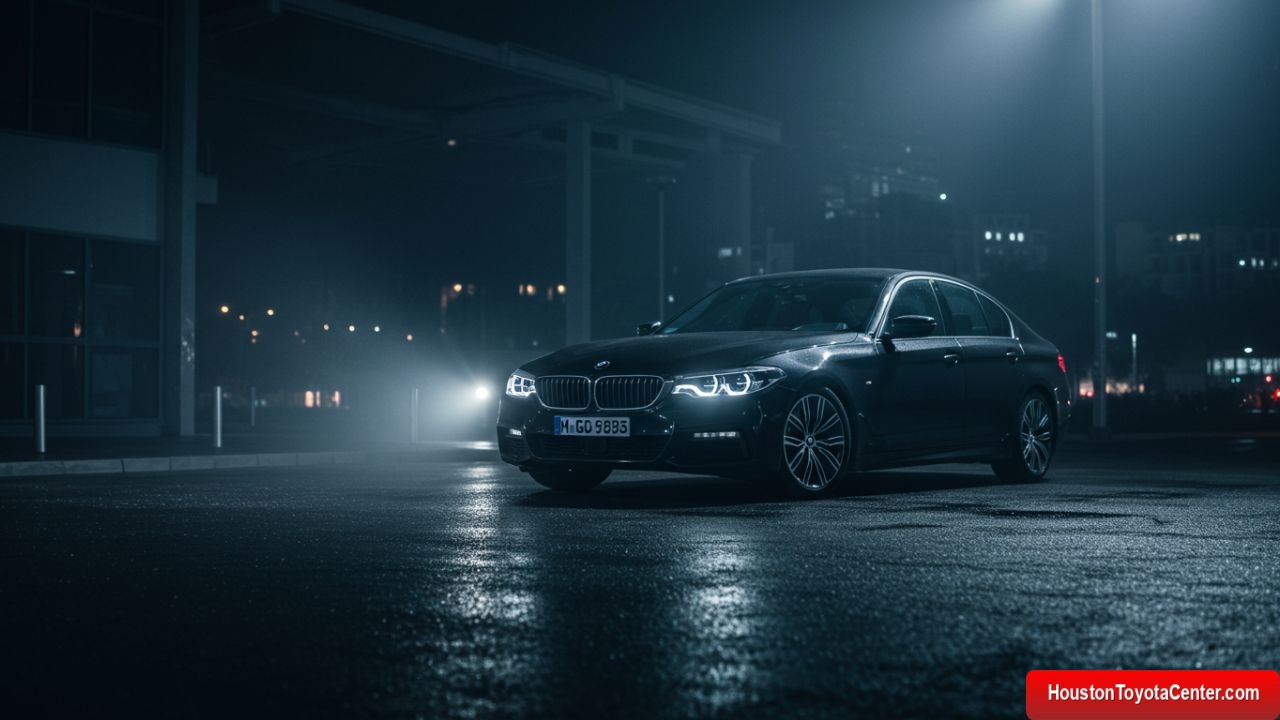Buying a used luxury car can be one of the smartest automotive decisions you’ll ever make—if you know what to look for. You get premium craftsmanship, cutting-edge technology, powerful performance, and sophisticated design for a fraction of the original price. But with that bargain can come hidden pitfalls if you don’t approach the purchase with the right knowledge.
This comprehensive guide will walk you through everything you need to look for in a used luxury vehicle—from mechanical reliability to ownership costs, from test drive tips to decoding trim levels. Whether you’re eyeing a Mercedes-Benz E-Class, a Lexus RX, a BMW 5 Series, or a Genesis G80, we’ll make sure you’re equipped to make a confident, informed decision.
Why Buy a Used Luxury Car?
Let’s begin with why this is such a compelling idea.
- Depreciation Works in Your Favor: Luxury cars depreciate faster than economy cars. A 3-year-old model might cost 40-60% less than its original MSRP.
- Build Quality: Luxury cars are engineered with higher-grade materials and more refined assembly processes.
- Features: Used luxury vehicles often include tech, safety, and comfort features that are still optional (or unavailable) in new economy cars.
But while the value proposition is excellent, the risks can be higher—especially with advanced systems that are expensive to repair.
FREE: Quickly identify and understand problems with your vehicle 🚘
CLICK HERE1. Vehicle History Report: No Exceptions
Always ask for a Carfax or AutoCheck report.
Here’s what you should scrutinize:
| Element | What to Check | Why It Matters |
|---|---|---|
| Title Status | Ensure it’s “clean,” not “salvage” or “rebuilt.” | Salvage titles indicate major damage. |
| Service History | Look for regular oil changes, brake jobs, etc. | Consistent maintenance is vital in luxury vehicles. |
| Previous Owners | Fewer owners = better. | Fewer transitions usually mean better care. |
| Accident Reports | Minor is okay, major is risky. | Frame damage can destroy handling and safety. |
2. Mileage: Not Just the Number, But the Story
High mileage isn’t always a deal-breaker in luxury cars—but how that mileage was earned matters.
- City vs. Highway: Highway miles are easier on vehicles.
- Maintenance Records: A well-serviced 100k-mile car is better than a neglected 50k-mile one.
- Mileage Benchmarks for Caution:
- 60k miles: Time for expensive maintenance like brakes, tires, and fluids.
- 90k miles: Transmission fluid, belts, water pump—check all receipts.
- 120k+: Only buy if it’s immaculately maintained.
3. Luxury Brand Reliability Rankings
Some brands age better than others. Based on reliability studies from J.D. Power and Consumer Reports:
| Brand | Reliability (1-5) | Notable Pros | Notable Cons |
|---|---|---|---|
| Lexus | ⭐⭐⭐⭐⭐ | Bulletproof reliability, lower maintenance | Conservative design |
| Acura | ⭐⭐⭐⭐ | Honda roots = dependable | Less “wow” factor |
| Genesis | ⭐⭐⭐⭐ | Newer, tech-packed, value-rich | Less long-term data |
| Mercedes-Benz | ⭐⭐⭐ | Unmatched refinement | Expensive repairs |
| BMW | ⭐⭐ | Ultimate driving feel | Costly maintenance |
| Audi | ⭐⭐ | Gorgeous interiors | Electronics prone to issues |
| Jaguar/Land Rover | ⭐ | Great styling | Reliability concerns |
4. Common Problems in Used Luxury Cars
Each brand and model has its quirks. But here are widespread issues to be on the lookout for:
- Air Suspension Failures: Common in Range Rover, BMW 7 Series, Mercedes S-Class. Very expensive to repair.
- Infotainment System Glitches: Particularly in older BMW iDrive and Audi MMI systems.
- Oil Leaks: Seen in many German brands. Even small leaks can be expensive.
- Transmission Hesitations: Watch out for jerky shifts or delayed engagement.
- Electronic Issues: Seat motors, power windows, adaptive cruise control systems—all can fail.
5. Interior & Feature Inspection: Don’t Skip the Details
Luxury cars are packed with features—but that also means more potential points of failure.
Test Every Button. Yes, Every One.
Here’s a list of what to test:
- Power seats with memory
- Heated and ventilated seats
- Infotainment system and navigation
- Bluetooth connectivity
- Adaptive cruise control
- Sunroof/panoramic roof operation
- Rear camera and sensors
- Heads-Up Display
- Power trunk/hatch
Also, inspect wear and tear:
- Leather Condition: Cracking or discoloration = poor care.
- Wood/Aluminum Trim: Look for peeling or warping.
- Carpet and Headliner: Check for stains or water damage.
6. Certified Pre-Owned (CPO) vs. Non-CPO: Is It Worth It?
CPO programs offer refurbished used luxury cars backed by factory warranties.
| Feature | CPO | Non-CPO |
|---|---|---|
| Warranty | Usually 1-2 years beyond original | None |
| Inspection | 100+ points | Varies (if any) |
| Cost | More expensive | Lower price upfront |
| Risk | Much lower | Potentially higher |
Tip: CPO from a dealership specializing in that brand is more reliable than generic used car dealers.
7. Test Drive: What to Listen and Feel For
Your test drive should focus on more than just comfort.
Checklist for Your Drive:
- Steering: Smooth and responsive? Any vibration?
- Brakes: Feel soft? Hear squeaking or grinding?
- Transmission: Hesitations? Jerky shifts?
- Suspension: Ride over bumps? Any knocking noises?
- Acceleration: Strong and even? Any delay?
- Noise Levels: A luxury car should be quiet. Whistles or rattles are red flags.
Also, try parking. Some luxury models have wide turning circles.
8. Ownership Costs: Don’t Get Surprised Later
Even used, a luxury car is still… luxury. That means:
- Insurance is Higher: Based on original MSRP and tech features.
- Premium Fuel Required: Almost always.
- Parts Are Expensive: Even brake pads and rotors cost more.
- Labor Costs: Specialized mechanics = higher hourly rates.
Estimate Average Annual Costs:
| Category | Cost |
|---|---|
| Maintenance (routine) | $800 – $1,500 |
| Unexpected Repairs | $500 – $3,000 |
| Insurance | $1,200 – $2,500 |
| Fuel (Premium) | $200 – $600 more per year |
9. Where to Buy: Dealership vs. Private Seller vs. Auction
| Source | Pros | Cons |
|---|---|---|
| Franchise Dealership | CPO programs, warranties | Higher price |
| Independent Dealer | Bigger selection | Varying quality |
| Private Seller | Best prices | No protections |
| Auction | Cheap luxury finds | Very risky without inspection |
Always have a pre-purchase inspection (PPI) done, especially if buying from a private seller or auction.
10. Hidden Gems: Underrated Used Luxury Cars Worth Buying
Here are models with great reputations and strong resale value:
- Lexus GS 350 – Reliable, sporty, premium.
- Acura RLX – Tech-packed, lower maintenance.
- Genesis G80 – Luxurious and modern.
- Infiniti Q70 – Strong V6, low profile, comfortable.
- Volvo S90 – Beautiful Scandinavian design with advanced safety.
11. Negotiating Price Like a Pro
Don’t be intimidated—dealerships expect negotiation.
Negotiation Tips:
- Bring comparable listings as leverage.
- Use any issues (tires, brakes, small scratches) to ask for a lower price.
- Be ready to walk away. There are many used luxury cars.
- Ask for extras: full tank, new mats, fresh oil change, extended warranty discounts.
Final Thoughts
Buying a used luxury car is like finding treasure—but only if you know what you’re digging for. Focus on clean history, brand reputation, feature functionality, and future costs. When you find the right car, it can offer years of elegant and rewarding driving, often for less than a brand-new base-model economy car.
So, take your time. Inspect thoroughly. Negotiate smart. And enjoy the finer things—on your terms.


Leave a Reply